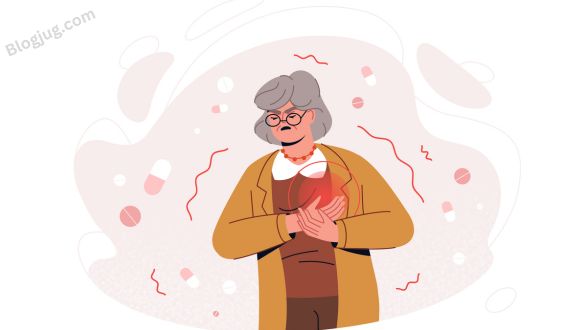You fell victim to the illness that was circulating the office last week, or perhaps it was the one your 8-year-old brought home from school. What began as a stuffy nose and sore throat has now, a few days later, developed into a painful cough that may cause thick mucus to come up from your lower airways. Your cough has a deeper tone. These are a few indications and manifestations of chest congestion. may ease the congestion in your chest that is caused by a cold or the flu; however, knowing what causes chest congestion and how to avoid it is just as vital as treating the symptoms.

Overview
What is Chest Congestion?
Mucus buildup in the lungs and lower breathing tubes (bronchi) is known as chest congestion. Usually, a productive, wet cough that produces thick mucus is present along with it. You may experience wheezing or crackling noises when you breathe in and out due to chest congestion.
What Causes Chest Congestion?
One of the most frequent causes of chest congestion is an infection with a cold or flu virus. This illness spreads from the upper respiratory tract, which includes your sinuses, throat, and nasal passages, to the lower respiratory tract, which includes your lungs and breathing tubes (bronchi).
By producing mucus, your body tries to get rid of viruses by trapping them and keeping them from getting to the cells lining your airways and lungs. Then, the mucus and the irritant are moved up and out of your lungs and breathing passages by the sweeping action of microscopic hair-like particles called cilia that line your lower respiratory tract. Additionally, the presence of mucus causes nerve sensors to fire, causing you to cough up extra mucus and produce a wet, chesty cough.
A stuffy nose, sore throat, and sneezing may accompany chest congestion that originated from a cold. If you have the flu, common symptoms including body pains, exhaustion, fever, and headaches may accompany your chest congestion. These symptoms normally go away during the first three to four days and may appear before the cough.
Chest Congestion Treatment
Achoo products can help reduce symptoms of chest congestion so you can feel better while your body recovers from the cold or flu virus. However, they cannot cure the cold or flu. You may experience a build-up of thick and dense mucus in your lungs when you have symptoms of chest congestion. It can be challenging to cough it out of your lungs as a result. Expectorants, such as guaifenesin, relieve congestion in the chest by thinning mucus and facilitating easy coughing up and out.
Certain cold and flu medications contain an expectorant to thin the mucus from wet coughs and a cough suppressant to lessen dry coughs caused by hypersensitive airways. This is because chest congestion caused by colds or the flu can manifest as wet, chesty coughs that clear mucus and dry, ineffective coughs.
Achoo Inhale
With components like guaifenesin, Achoo Inhaler has the largest amount of symptom-fighting power to ease your worst cold symptoms. Achoo Inhaler improves cough, sinus pressure, fever, and mild aches and pains in addition to clearing up chest congestion.
In addition to chest congestion, colds and flu can occasionally cause additional sinus-related symptoms, such as headaches, pains, and sinus pressure. Chest congestion is relieved by the natural active ingredients in the Achoo 2 In 1 Inhaler and Roll On.
How to Avoid Contracting the Viruses that Cause Chest Congestion and Spreading Them
Preventing the colds and flu that cause chest congestion is the first step toward avoiding it, and strengthening and maintaining your immune system is the best way to do that.
1. Consume a diet rich in fresh produce that is high in nutrients. These foods include vital vitamins and minerals that keep your immune system strong and capable of warding off illnesses like the flu and colds.
2. Obtain 7 to 8 hours of restful sleep every night. Your body heals and repairs itself throughout sleep, readying it for the next day.
3. Breathe deeply. Cardiovascular activity strengthens your immune system, increases lung capacity, and tones your breathing muscles. 5 days a week, 30 minutes of moderate activity—such as brisk walking, cycling, gardening, or intense housecleaning—is advised by the American Lung Association. It’s also a fantastic method to…
4. Lessen your tension. It might be stressful only to be told you need to de-stress, isn’t that right? We concur. So why not cross this off your list of immunological self-care activities by using Step, a healthful workout regimen?
By limiting your exposure to cold and flu germs, you can prevent your immune system from being overworked and therefore avoid experiencing chest congestion.
By practicing basic hygiene, you can lessen your risk of contracting a cold or flu and infecting people around you. It’s crucial to remember that your virus could be infectious, meaning it could spread to other people before or after symptoms manifest.
1. Wash your hands: Close contact with an infected person or touching things they have come into contact with can spread the germs that cause colds and flu to your body when you touch your mouth, nose, or eyes. Throughout the day, wash your hands regularly to reduce the amount of germs you come into contact with. It is recommended by the Centers for Disease Control and Prevention to wash your hands with soap and water for at least 20 seconds. Using an alcohol-based hand sanitizer is the best option if you don’t have access to soap and water.
2. Physical Distancing: One of the greatest methods to reduce the transmission of respiratory diseases is to keep a minimum of 6 feet between you and other individuals, according to the Centers for Disease Control and Prevention (CDC).
3. Avoid Touching Your Face: Especially your mouth, nose, and eyes, which have easy-to-access openings via which viruses can enter your body. It’s worth the work, and with enough repetition, it might come naturally.
4. Cover Your Cough: Coughing is a common way that germs travel through the air. Cough into a tissue or your elbow to help confine germs; avoid coughing into your hands, where contact with the hands might transmit the germs.
5. Avoid Sharing Utensils and Cups: This applies to drinking cups, water bottles, and cutlery as well as personal care products like lipstick and makeup.









3 thoughts on “Chest Congestion: Causes, Symptoms, and Treatment”